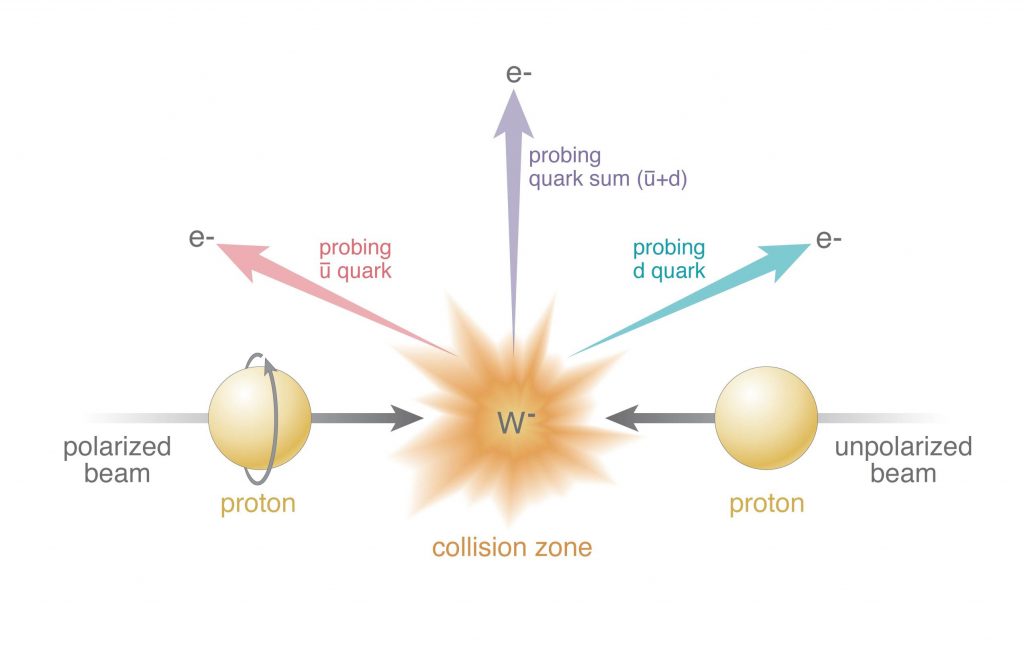Spinning protons: ‘Flavors’ of antiquarks create different effects

New data from the STAR
experiment at Brookhaven National Laboratory’s Relativistic Heavy Ion
Collider (RHIC) add detail, if not also complexity, to an intriguing
puzzle that scientists have been seeking to solve: how the building blocks that
make up a proton contribute to its spin.
The results, published March 14 as a rapid communication in the
journal Physical Review D,
reveal definitively for the first time that different “flavors” of
antiquarks contribute differently to the proton’s overall spin – and in a way
that’s opposite to those flavors’ relative abundance.
“This measurement shows that the quark piece of the proton spin puzzle is
made of several pieces,” said James Drachenberg, a deputy
spokesperson for STAR from Abilene Christian University who received his doctorate
in physics from Texas A&M University in 2012. “It’s not a boring
puzzle; it’s not evenly divided. There’s a more complicated picture, and this
result is giving us the first glimpse of what that picture looks like.”
It’s not the first time that scientists’ view of proton spin has changed. There
was a full-blown spin crisis in the 1980s when an experiment at the
European Center for Nuclear Research (CERN) revealed that the sum of quark and
antiquark spins within a proton could account for, at best, a quarter of the
overall spin.
“The spin crisis forced us fundamentally to rethink our understanding of
the proton,” said physicist Carl Gagliardi, a convener of the STAR
Spin Physics working group from Texas A&M. “Before that time, we
thought of protons as two ‘up’ quarks and a ‘down’ quark. We knew there are
also gluons present to bind the quarks together, and the theory requires
additional ephemeral quark-antiquark pairs. But we thought the gluons and
antiquarks played no role in the visible proton properties.”
Gagliardi is a professor and associate head of the Department of Physics in Texas A&M University’s College of Science.
STAR is an international collaboration of more than 500 physicists and engineers from 60 universities and national laboratories in the United States and 11 other countries. Texas A&M has been a STAR institution since 2000, and at present, there are nine Texas A&M Cyclotron Institute-affiliated physicists in STAR, including three faculty members.
RHIC, a U.S. Department of Energy Office of Science user facility for nuclear physics research at Brookhaven, was built in part so scientists could measure the contributions of other components, including antiquarks and gluons. Antiquarks, which have only a fleeting existence, form as quark-antiquark pairs when gluons split.
“We call these pairs the quark sea,” Drachenberg said. “At any given instant, you have quarks, gluons and a sea of quark-antiquark pairs that contribute in some way to the description of the proton. We understand the role these sea quarks play in some respects, but not in respect to spin.”

